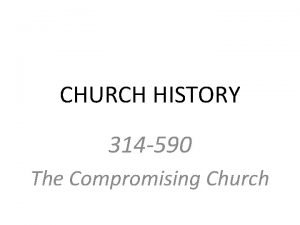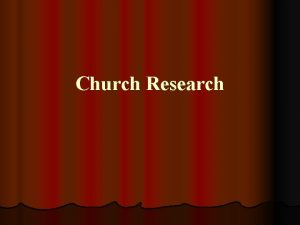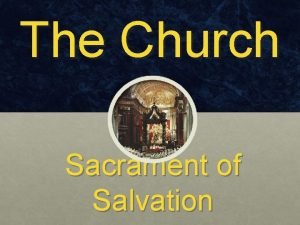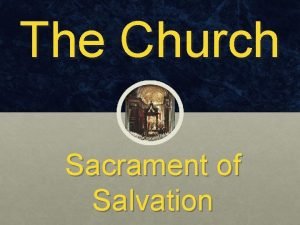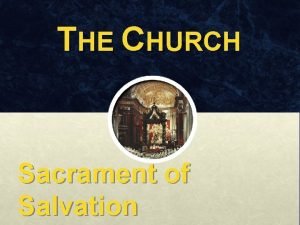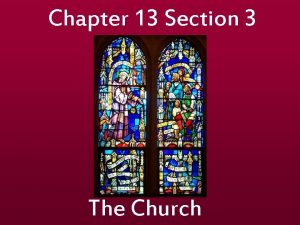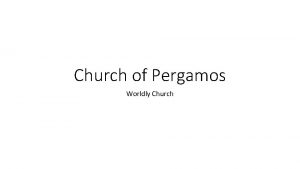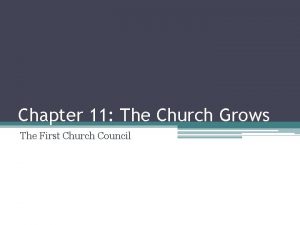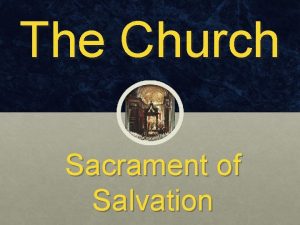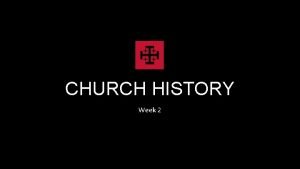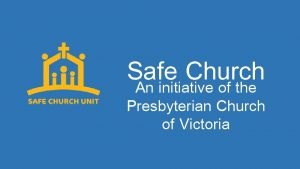CHAPTER 5 Chapter 5 The Church in the


















- Slides: 18

CHAPTER 5

Chapter 5 The Church in the Renaissance and the Age of Exploration

Renaissance A cultural rebirth begun in the late Middle Ages that encouraged a rediscovery of the ancient civilizations of Rome, Greece, and Egypt. The Renaissance stressed the natural and the human. The Origins of the Renaissance and the Age of Exploration

Comparison of Middle Ages and Renaissance • • • The Middle Ages with spiritual • Preoccupied Emphasized human more than concerns divine on human survivalcreativity and • Focused Highlighted • community Artists used vivid colors art. Greek predominated • Gothic Relied on philosophy on to Christian • Relied Returned a study theology of classical civilizations Focused on war, famine, and disease of their civilization Renaissance Period Emphasized than • Emphasizedhuman more than divine • Highlightedhuman creativity and • Artists used vivid colors individuality • Artists Reliedused on Greek vividphilosophy colors • Relied Returned to a study of classical on Greek philosophy civilizations Returned to a study of classical civilizations The Origins of the Renaissance and the Age of Exploration

Christian Humanism Christian humanism combined the revived interest in humanity with the Christian faith. The Origins of the Renaissance and the Age of Exploration

Desiderius Erasmus of Rotterdam • Faith in Christ led him to monastic life until he pursued scholarly efforts. • Wrote critiques of corrupt leaders—civil and ecclesial. • Criticized the mindsets of society occupied with superstition or worldly concerned (In Praise of Folly). • Encouraged Catholics to keep Christ above all devotion to saints. • Friend and contemporary to St. Thomas More. The Rebirth of Classical Writing and Scholarship

St. Thomas More • Attended Canterbury College at Oxford and studied Latin, Greek, philosophy, law. • Became a prominent lawyer, philosopher, statesman and writer. • Wrote Utopia, which described a world in which society was run by reason. • Fell out of favor despite his stately climb, with King Henry for not supporting his divorce or his breaking with the pope. • Sentenced to treason and beheaded. The Rebirth of Classical Writing and Scholarship

Medici Family • A prominent family that ruled Florence and later Tuscany for 200 years. • The Medicis were financially prosperous due to the Medici Bank, well known throughout Europe. • The family supported famous Renaissance artists and helped fund and commission works for the Church. • The Medici family produced four popes, and Catherine who became Queen of France. Madonna and Child with St Anne and Members of the Medici Family as Saints by: Giovanni Maria Butteri (1575) Religious Art of the Renaissance

Definition of Indulgence • The remission before God of the temporal punishment still due to forgiven sins. Indulgences are, as the Catechism of the Catholic Church teaches, “closely linked to the effects of the sacrament of Pen - ance” (CCC, 1471). Religious Art of the Renaissance

Artists of the Renaissance Name Types of Artwork Famous for Giotto (1266 -1337) Father of European painting 28 frescoes including Christ Walking on Water Fra Angelico (1395 -1455) Scenes of serene and somber imagery The Annunciation Bramante (1444 -1514) Architecture Chief architect of St. Peter’s Basilica Michelangelo (1475 -1564) Il Divino “The Divine One” studied anatomy Ceiling of the Sistine Chapel Raphael (1483 -1520) Architect and painter Sistine Madonna St. Philip Neri (1515 -1595) Palestrina(1525 -1594) Baronius (1538 -1607) Oratorian, composer, writer Reformation of liturgical music and history of the church Berini (1598 -1680) Baroque sculptor Ecstasy of St. Teresa and Baldacchino

Evangelization and the Age of Exploration

Missionaries • Accompanied explorers to spread the Gospel message to the New World, Africa, and the Far East. • In 1493, Pope Alexander VI sent Portuguese missionaries to Brazil and Spanish missionaries to the rest of the New World. Evangelization and the Age of Exploration

Conquistadors • Spanish for “conquerors, ” conquistadors were explorers who left Spain to conquer new faraway territories and claim them in the name of the Spanish crown. • Many had a thirst for gold and thought of the native people as inferior Evangelization and the Age of Exploration

Jesuit Missionaries in the Far East • St. Francis Xavier (1506 -1552) founded missions in India, Indonesia, and Japan. • Matteo Ricci (1552– 1610) founded missions in China. • Robert de Nobili (1577– 1656) founded missions in India. • The Jesuit missionaries tried to adapt to the Eastern cultures. Evangelization and the Age of Exploration

African Missions • Christianity had mostly been wiped out by Muslim occupation from the late seventh to the eighth centuries. • In the fifteenth and sixteenth centuries, Portuguese explorers brought the Gospel to coastal regions. • Christianity waned again in the 19 th century. • Catholic missionaries eagerly bring the Gospel message back again. • The African population of Catholics has grown 238 percent since 1980. Evangelization and the Age of Exploration

Differences in Missionaries Franciscan Missions • Established in Mexico and the southwestern United States. • Set up European organizational structures. • Expected the native people to adapt to European language and culture. Jesuit Missions • Established in the Northeast, Great Lakes, Mississippi River regions. • Adapted to the culture and language of the Huron or native people. • Were less successful in conversion of native people than the Franciscans. Saints in the Age of Exploration

Assignment How can you reconcile the contributions made by missionaries with the poor treatment some native peoples received by the same missionaries?

Catholic Saints and the Missions Saint Name Contribution St. Juan Diego Cuauhtlatoatzin St. Juan Diego saw Our Lady of Guadalupe and the miracle led to the conversion of many natives. St. Peter Claver Baptized as many as 300, 000 slaves in Cartagena where he spent three years aiding slaves and praying for them. St. Martin de Porres Left by his father due to mixed race, he was plunged into poverty but eventually joined the Dominicans. St. Rose of Lima First saint of the Americas born to Spanish colonists, Rose spent her life caring for homeless children, the sick and elderly. St. Francis Xavier The greatest church missionary since Paul the Apostle; he brought Catholicism to Japan, India, and others. Matteo Ricci Converted upwards of 2, 500 Catholics in China by taking on Chinese customs. Saints in the Age of Exploration
 Hình ảnh bộ gõ cơ thể búng tay
Hình ảnh bộ gõ cơ thể búng tay Frameset trong html5
Frameset trong html5 Bổ thể
Bổ thể Tỉ lệ cơ thể trẻ em
Tỉ lệ cơ thể trẻ em Voi kéo gỗ như thế nào
Voi kéo gỗ như thế nào Chụp phim tư thế worms-breton
Chụp phim tư thế worms-breton Chúa yêu trần thế
Chúa yêu trần thế Các môn thể thao bắt đầu bằng tiếng chạy
Các môn thể thao bắt đầu bằng tiếng chạy Thế nào là hệ số cao nhất
Thế nào là hệ số cao nhất Các châu lục và đại dương trên thế giới
Các châu lục và đại dương trên thế giới Cong thức tính động năng
Cong thức tính động năng Trời xanh đây là của chúng ta thể thơ
Trời xanh đây là của chúng ta thể thơ Mật thư anh em như thể tay chân
Mật thư anh em như thể tay chân Phép trừ bù
Phép trừ bù Phản ứng thế ankan
Phản ứng thế ankan Các châu lục và đại dương trên thế giới
Các châu lục và đại dương trên thế giới Thơ thất ngôn tứ tuyệt đường luật
Thơ thất ngôn tứ tuyệt đường luật Quá trình desamine hóa có thể tạo ra
Quá trình desamine hóa có thể tạo ra Một số thể thơ truyền thống
Một số thể thơ truyền thống





















